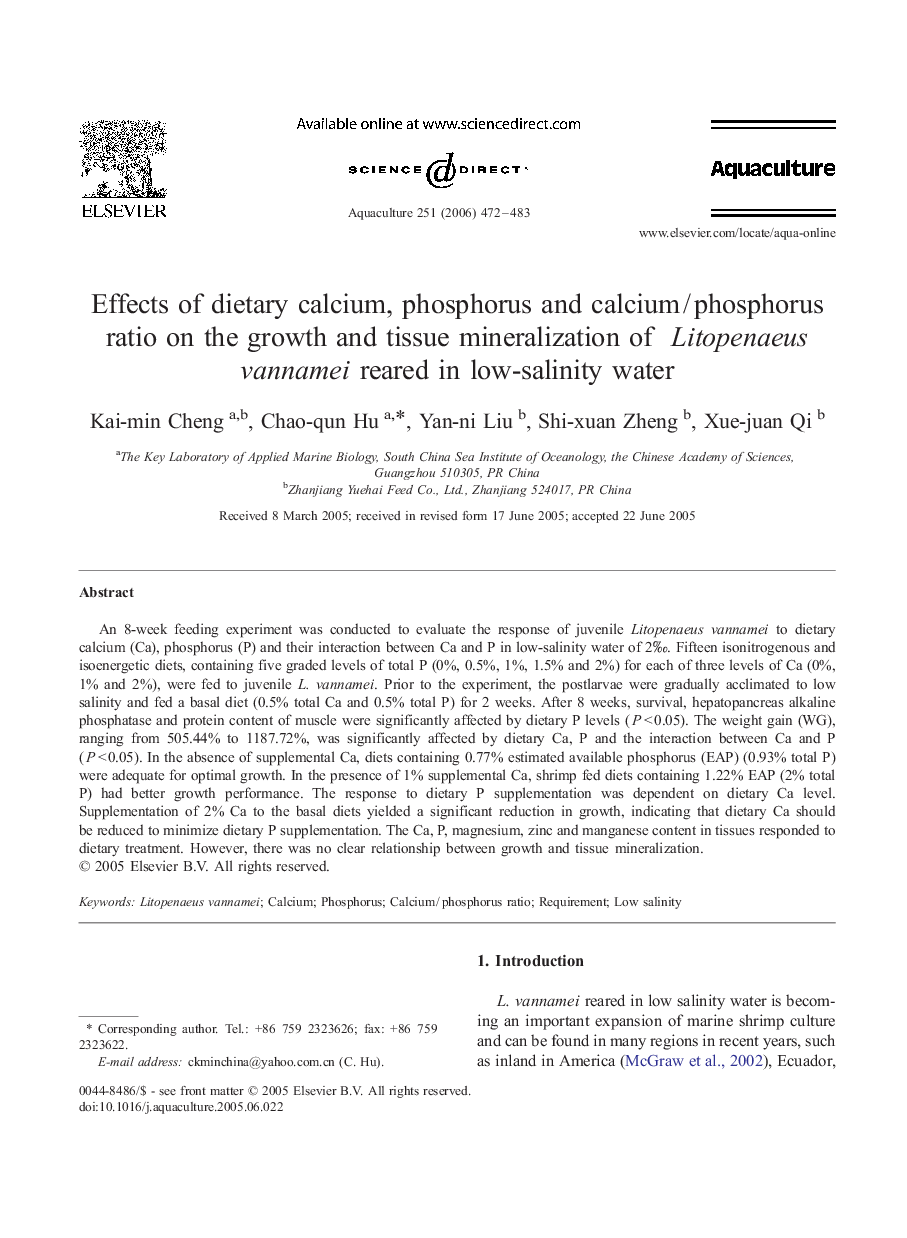| کد مقاله | کد نشریه | سال انتشار | مقاله انگلیسی | نسخه تمام متن |
|---|---|---|---|---|
| 2426331 | 1552990 | 2006 | 12 صفحه PDF | دانلود رایگان |

An 8-week feeding experiment was conducted to evaluate the response of juvenile Litopenaeus vannamei to dietary calcium (Ca), phosphorus (P) and their interaction between Ca and P in low-salinity water of 2‰. Fifteen isonitrogenous and isoenergetic diets, containing five graded levels of total P (0%, 0.5%, 1%, 1.5% and 2%) for each of three levels of Ca (0%, 1% and 2%), were fed to juvenile L. vannamei. Prior to the experiment, the postlarvae were gradually acclimated to low salinity and fed a basal diet (0.5% total Ca and 0.5% total P) for 2 weeks. After 8 weeks, survival, hepatopancreas alkaline phosphatase and protein content of muscle were significantly affected by dietary P levels (P < 0.05). The weight gain (WG), ranging from 505.44% to 1187.72%, was significantly affected by dietary Ca, P and the interaction between Ca and P (P < 0.05). In the absence of supplemental Ca, diets containing 0.77% estimated available phosphorus (EAP) (0.93% total P) were adequate for optimal growth. In the presence of 1% supplemental Ca, shrimp fed diets containing 1.22% EAP (2% total P) had better growth performance. The response to dietary P supplementation was dependent on dietary Ca level. Supplementation of 2% Ca to the basal diets yielded a significant reduction in growth, indicating that dietary Ca should be reduced to minimize dietary P supplementation. The Ca, P, magnesium, zinc and manganese content in tissues responded to dietary treatment. However, there was no clear relationship between growth and tissue mineralization.
Journal: Aquaculture - Volume 251, Issues 2–4, 28 February 2006, Pages 472–483